Ten Ancient Stories and the Geological Events That May Have Inspired Them
If you dig deep enough, say scientists, you can find some truth to legends and creation stories
/https://tf-cmsv2-smithsonianmag-media.s3.amazonaws.com/filer/08/3f/083fd182-0aae-47b1-9eae-b24bf44c81e8/noahs_ark_on_mount_ararat-simon_de_myle-wikimedia_commons.jpg)
Myths have fed the imaginations and souls of humans for thousands of years. The vast majority of these tales are just stories people have handed down through the ages. But a few have roots in real geological events of the past, providing warning of potential dangers and speaking to the awe we hold for the might of the planet.
These stories encode the observations of the people who witnessed them, says geoscientist Patrick Nunn, of the University of the Sunshine Coast in Australia, who has studied the links between natural hazards and stories told in the Pacific.
There's no way of telling which came first, the disaster or the story. But tales can provide clues to the past and even help fill in gaps in scientific knowledge about long-ago geological phenomena.
Here are ten ancient stories from around the world and the geology that may have influenced them:
Noah's Ark
In the well-known story told among Christians, Jews and Muslims (and in movie theaters this week), God chose to destroy the Earth with a great flood but spared one man, Noah, and his family. On God’s command, Noah built a huge boat, an ark, and filled it with two of every animal. God covered the Earth with water, drowning everyone and everything that once roamed the land. Noah, his family and the animals on the ark survived and repopulated the planet.
Science: Similar flood tales are told in many cultures, but there never was a global deluge. For one, there’s just not enough water in the Earth system to cover all the land. But, Nunn says, “it may well be that Noah’s flood is a recollection of a large wave that drowned for a few weeks a particular piece of land and on that piece of land there was nowhere dry to live.” Some geologists think that the Noah story may have been influenced by a catastrophic flooding event in the Black Sea around 5,000 B.C.
There’s a natural tendency for people to exaggerate their memories, to turn a bad event into a far worse one. And a global flood is one explanation for something like the discovery of fossil seashells on the side of a mountain, says Adrienne Mayor, a historian of ancient science at Stanford University. We now know, though, that plate tectonics are responsible for lifting up rocks from the ocean floor to high elevations.
The Oracle at Delphi
In ancient Greece, in the town of Delphi on the slopes of Mount Parnassus, there was a temple devoted to the god Apollo. Within a sacred chamber, a priestess called the Pythia would breathe in sweet-smelling vapors emanating from a crack in the rock. These vapors would send her into a state of frenzy during which she would channel Apollo and speak gibberish. A priest would then turn that gibberish into prophesies.
Science: The temple was a real place, and scientists have discovered two geologic faults running beneath the site, now in ruins. Gas was likely emanating from those fissures when the oracle was in action. But researchers have been arguing over the contents of the euphoria-causing gaseous mix. Theories include ethylene, benzene or a mix of carbon dioxide and methane.
Atlantis
Plato, the ancient Greek philosopher, wrote of a great civilization called Atlantis founded by a race of people who were half god and half human. They lived in a utopia that held great naval power. But their home, located on islands shaped like a series of concentric circles, was destroyed in a great cataclysm.
Science: Atlantis probably wasn’t a real place, but a real island civilization may have inspired the tale. Among the contenders is Santorini in Greece. Santorini is now an archipelago, but thousands of years ago it was a single island—a volcano named Thera. Around 3,500 years ago, the volcano blew up in one of the biggest eruptions in human history, destroying the island, setting off tsunamis and blowing tons of sulfur dioxide into the atmosphere where it lingered for years and probably caused many cold, wet summers. Those conditions would have ruined harvests in the region and are thought to have contributed to the quick decline of the Minoans, who had dominated the Mediterranean from nearby Crete.
The city of Helike in Greece has also been suggested as inspiration for Atlantis. The ancient metropolis was wiped off the map by an earthquake and tsunami in December of the year 373 B.C.
Pele, Goddess of Kilauea
Pele came to Hawaii with her sisters and other relatives. She started in Kauai. There she met a man, Lohi’au, but she did not stay because there was no land hot enough for her liking. She eventually settled in the crater at Kilauea on the big island of Hawaii and asked her sister Hi’iaka to return for Lohi’au. In return, Hi’iaka asked that Pele not destroy her beloved forest. Hi’iaka was given 40 days for the task but did not return in time. Pele, thinking that Hi’iaka and Lohi’au had become romantically entangled, set the forest on fire. After Hi’iaka discovered what had happened, she made love to Lohi’au in view of Pele. So Pele killed Lohi’au and threw his body into her crater. Hi’iaka dug furiously to recover the body, rocks flying as she dug deeper. She finally recovered his body, and they are now together.
Science: What seems like a celestial soap opera actually describes volcanic activity at Kilauea, say scientists. The burning forest was probably a lava flow, the largest the island experienced since its settlement by Polynesians. Lava flowed continuously for 60 years in the 15th century, covering some 430 square kilometers of the island of Hawaii. “If any flow were to be commemorated in oral tradition, this should be the one, because the destruction of such a large area of forest would have impacted Hawaiian life in many ways,” U.S. Geological Survey volcano scientist Donald A. Swanson wrote in the Journal of Volcanology and Geothermal Research in 2008. Hi’iaka’s furious digging may represent the formation of the volcano’s modern caldera that occurred in the years after the lava flow.
Rama's Bridge
In the Hindu epic the Ramayana, Sita, the wife of the god Rama, is kidnapped and taken to the Demon Kingdom on the island of Lanka. Bears and monkeys help Rama and his brother Lakshman by building a floating bridge between India and Lanka. Rama leads an army of monkey-like men and rescues his wife.
Science: Satellite images reveal a 29-kilometer line of limestone shoals that stretches between India and Sri Lanka that would have been drowned when sea level rose after the last ice age. It is possible that people were able to cross over the bridge until about 4,500 years ago. But Rama’s Bridge is not the only mythological site buried along India’s shores.
A more recent natural event, the tsunami in the Indian Ocean on December 26, 2004, revealed the truth of the legend of Mahabalipuram, a port city on India’s northeast coast that was said to be home to seven pagodas. Today, only one pagoda, the Shore Temple, exists. But the great tsunami removed centuries of sediment from the ocean floor just off the coast, revealing several submerged temples.
The Exploding Lake
The Kom people in Cameroon lived for a short time in the land of the Bamessi. The leader, or Fon, of the Kom discovered a plot by the Bamessi Fon to kill all the young men in his kingdom, and the Kom Fon vowed revenge. He told his sister he would hang himself and the fluids from his body would form a lake. The Kom were not to go near the lake—they were to leave the fish for the Bamessi and should prepare themselves to leave the region on the day that was set for catching fish. On that day, when the Bamessi entered the lake to fish, the lake exploded (or imploded or sank, depending on the storyteller), drowning everyone.
Science: On the night of August 21, 1986, Lake Nyos, a volcanic lake in Cameroon, released a deadly cloud of carbon dioxide, killing 1,700 people sleeping in nearby villages. A smaller degassing event at Lake Monoun two years earlier killed 37. Carbon dioxide can build up in waters at the bottom of volcanic lakes such as these, where it is kept dissolved by the pressure of the lake water above. But seismic activity can trigger a sudden release of the gas, which will travel along the ground and suffocate anyone caught in the cloud. Such events might have been behind the exploding lake of the Kom legend.
Mayor notes that Africa is not the only place with cautionary tales of deadly lakes—Greeks and Romans also had stories warning of valleys or bodies of water that killed birds flying over them. They may also describe real places.
Namazu, the Earthshaker
Buried beneath Japan is a giant catfish named Namazu. The god Kashima keeps Namazu still with the help of a giant stone placed on the fish’s head. But when Kashima slips, Namazu can move its feelers or its tail, causing the ground above to move.
Science: Japan, which sits at the junction of several tectonic plates, is home to volcanoes and is criss-crossed by seismic faults, making it the number one country for earthquakes—no giant catfish necessary. Catfish also figure into Japanese myth in another way: The fish are supposedly able to predict earthquakes. Decades of research has failed to find any link between catfish behavior and earthquakes, however, and the country now relies on a sophisticated early warning system that detects seismic waves and sends messages to people so they can take actions, such as slowing trains, before the worst of the shaking arrives.
The Chimera
In the Illiad, Homer describes a creature “of immortal make, not human, lion-fronted and snake behind, a goat in the middle and snorting out the breath of the terrible flame of bright fire.” This is the Chimera, daughter of the half-woman, half-snake Echidna and slain by the hero Bellerofonte. But her flaming tongue remained, burning in her lair.
Science: In the Lycian Way of modern-day Turkey, hikers can visit Yanartas, the site of the Chimera’s eternal flames. There, methane vents from dozens of cracks in the ground. The ignited gas has probably been burning for millennia, and sailors have long used it as a natural lighthouse. The myth probably predates the Greeks and Romans, beginning with the Hittites, says Mayor. The Hittite chimera had three heads—a main human head, a lion head facing forward and the head of a snake on the end of its tail.
The Creation of Crater Lake
When the first Europeans arrived in the Pacific Northwest, they heard a tale from the Klamath people about the creation of Crater Lake. The Native Americans would not gaze upon the lake, for to do so was to invite death. The lake, they said, had been created in a great battle between Llao, who ruled the Below World, and Skell, the chief of the Above World. During the battle, darkness covered the land, and Llao, standing on Mount Mazama, and Skell, on Mount Shasta, threw rocks and flames. The fight ended when Mount Mazama collapsed and sent Llao back into the underworld. Rain filled in the remaining depression, forming a lake in the mountain’s place.
Science: The tale the explorers heard was not far from the truth, though it wasn’t angry gods but a volcano, Mount Mazama, that erupted 7,700 years ago. “The oral traditions actually contain details about the explosion,” notes Mayor. Scientists now recognize that the Klamath tales describe a real event. Red-hot rocks do get flung through the sky during a volcanic eruption. The mountain did collapse to form a volcanic caldera that was filled in with rainwater.
What’s unusual about this story, though, is that it was told for 7,000 years, passed down through so many generations. Usually, myths are reliable for only about 600 to 700 years, says Nunn. “These kinds of things are very, very rare.”
The Vanished Island
People on the Solomon Islands of the South Pacific tell stories of Teonimanu, the island that disappeared. Rapuanate had taken a woman from the island to be his wife, but her brother took her back. So Rapuanate turned to sorcery in revenge. He was given three taro plants, two to plant on Teonimanu and one to keep. When new leaves sprouted on his plant, it was a sign that the island was about to sink. People had notice to flee the island, though—it became salty as the ocean water rose. They fled on boats, rafts or clinging to trees that were washed off the land.
Science: Lark Shoal sits at the eastern edge of the Solomon Islands, part of a ridge that flanks the 5,000-meter-deep Cape Johnson Trench. An earthquake could have sparked a landslide that let the island slide into the trench, Nunn says. Underwater maps have revealed several islands submerged under hundreds of meters of water. Islands have probably been sinking in this region for a million years.
Unlike the myths of the Bible or Greece that provide inspiration for many modern-day tales, stories like that of Teonimanu are not well known and often not even written down, Nunn notes. They’re held in the minds of an older generation, passed from person to person in the same way they’ve been for hundreds or even thousands of years. He worries, though, that with modern lifestyles creeping into every corner of the world, many of these stories will be lost. “When the old people who have these myths today die,” he says, “many of the myths will disappear with them.” And so will the warnings of our geologic past.
/https://tf-cmsv2-smithsonianmag-media.s3.amazonaws.com/accounts/headshot/Sarah-Zielinski-240.jpg)
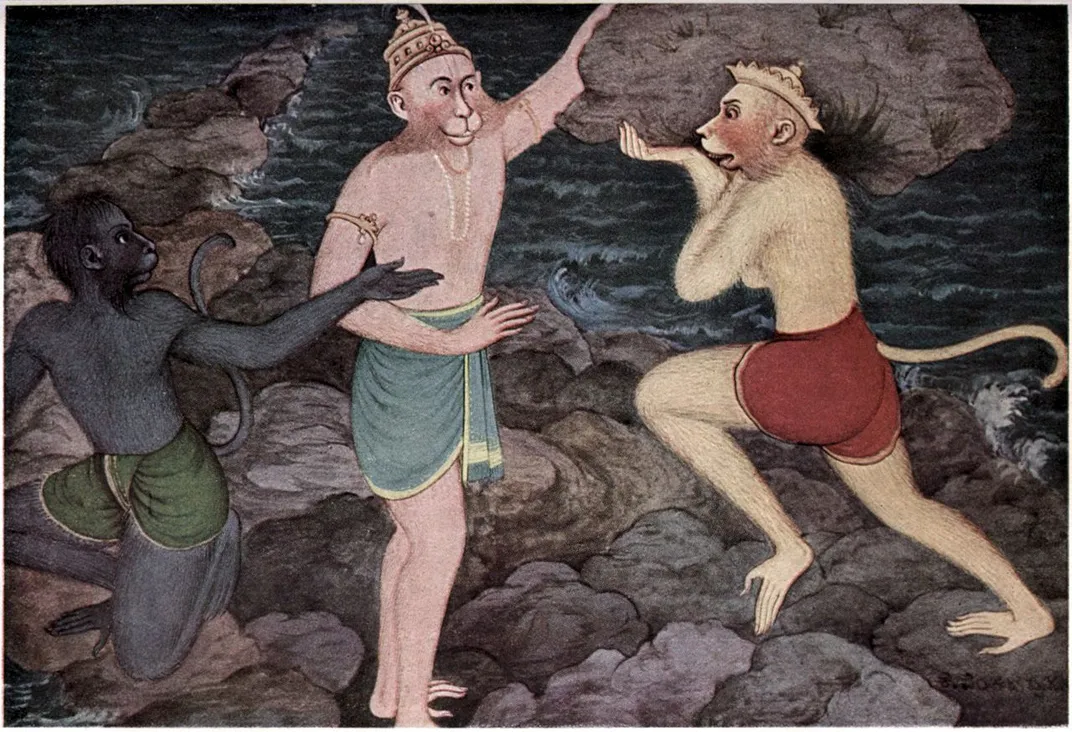
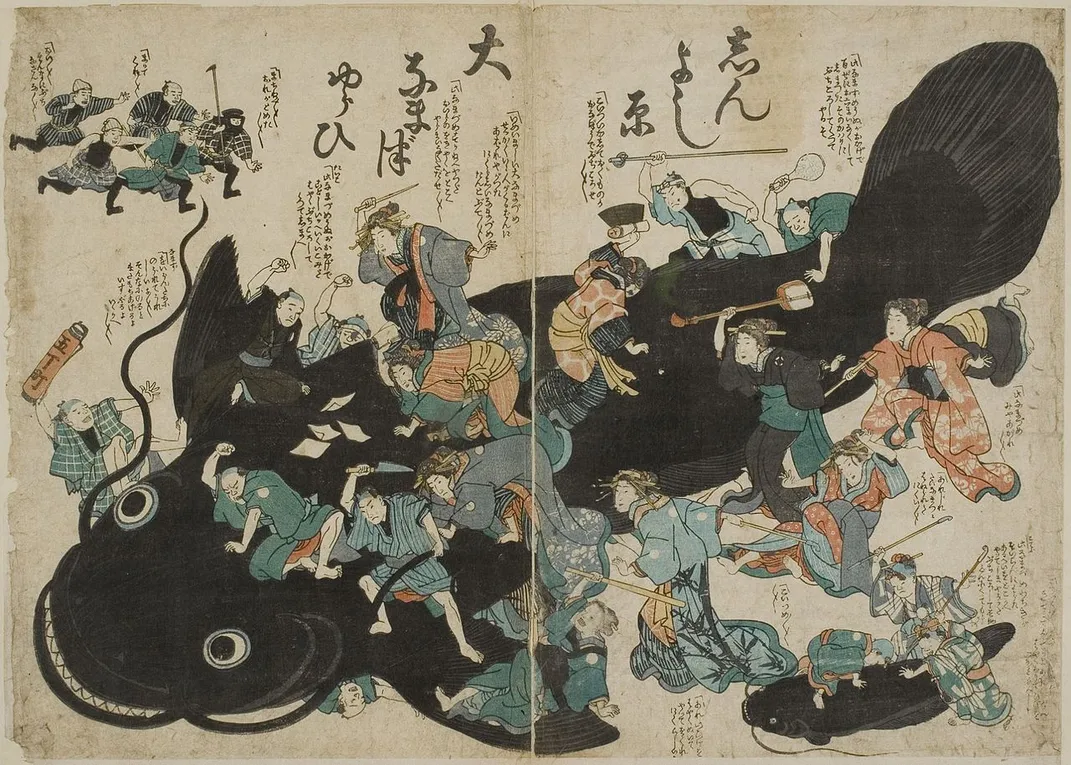
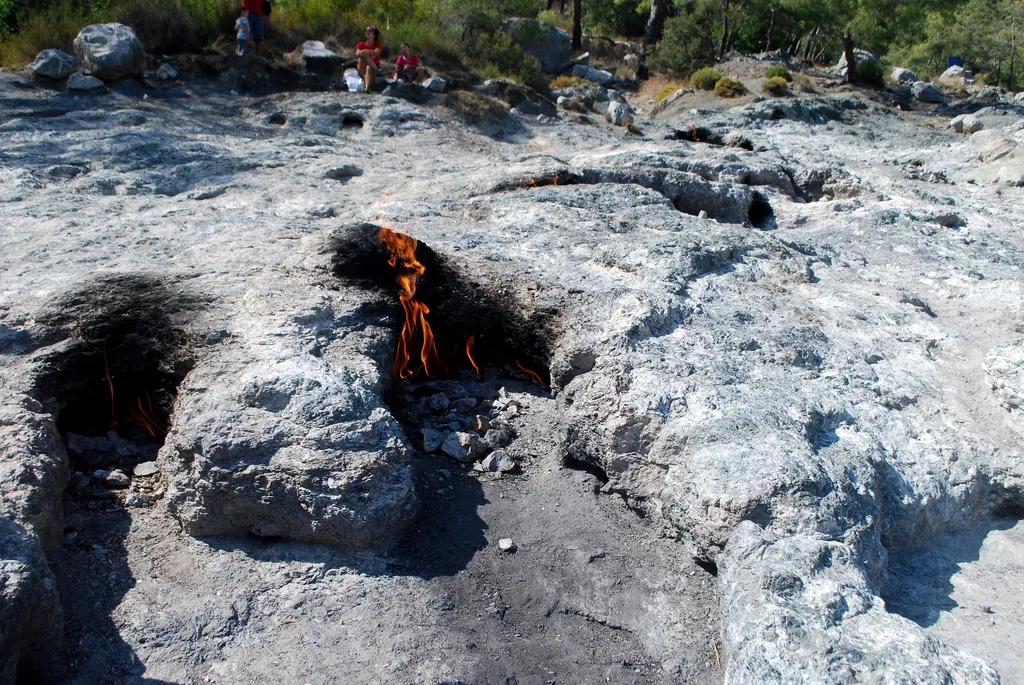
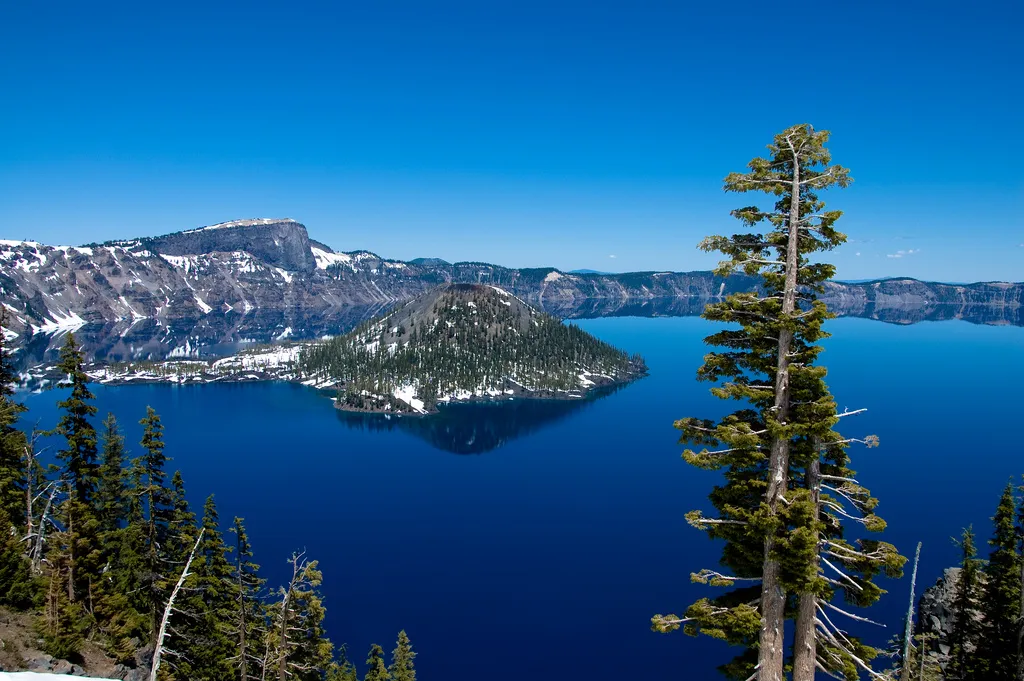
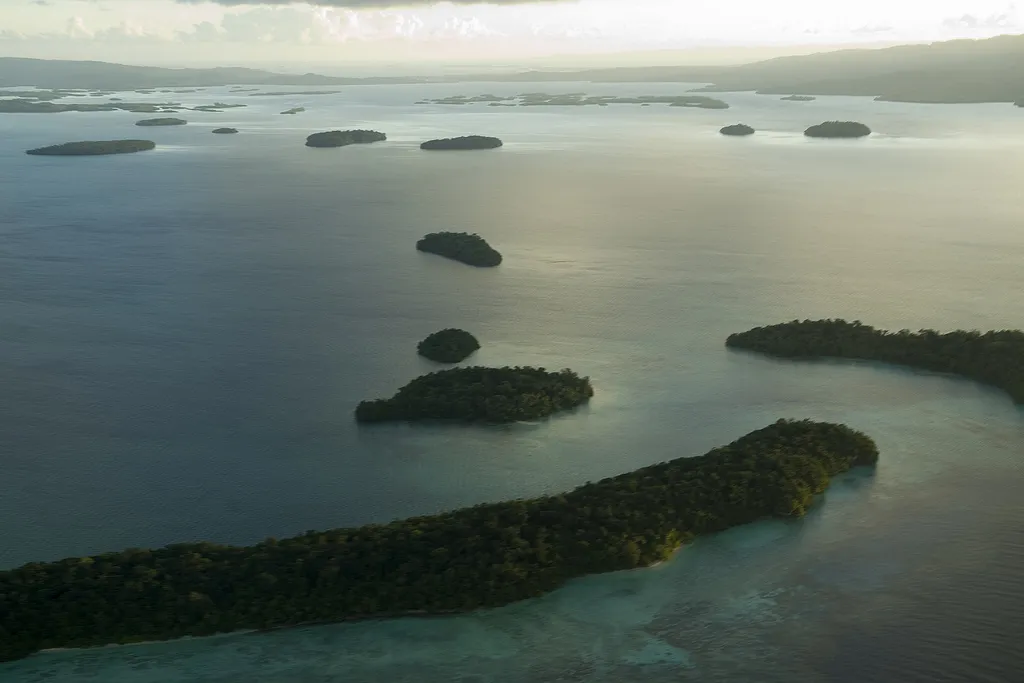
/https://tf-cmsv2-smithsonianmag-media.s3.amazonaws.com/filer/81/00/810078db-28c3-4494-b67e-35b4c86e577e/kilauea-flickr_user_.jpg)
/https://tf-cmsv2-smithsonianmag-media.s3.amazonaws.com/accounts/headshot/Sarah-Zielinski-240.jpg)